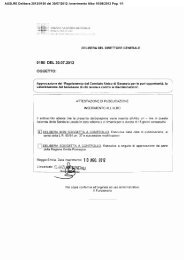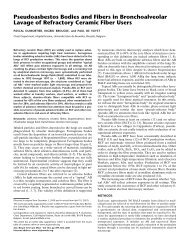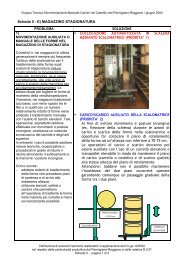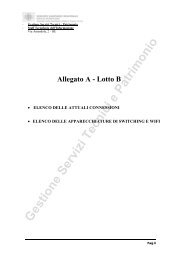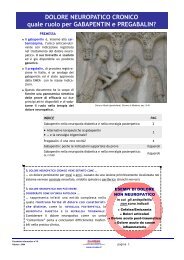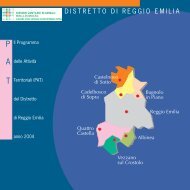Download PDF
Download PDF
Download PDF
- No tags were found...
You also want an ePaper? Increase the reach of your titles
YUMPU automatically turns print PDFs into web optimized ePapers that Google loves.
Home-based interventions for postpartum depression 9toms of PPD and that a relatively short six-session courseof treatment may be sufficient to produce such reductions inPPD symptoms. It is unclear from these studies, however, ifthe effects of CBT are sustained over time. The one studyusing CBT that followed participants post-intervention(Prendergast and Austin 2001) found that symptoms ofdepression continued to decrease in the intervention groupbut not in the control group 6 months post-intervention, butthis finding did not reach statistical significance. The resultsfrom these three studies should be interpreted with somecaution as several methodological concerns exist. OnlyAppleby et al. (1997) used independent assessors toevaluate study outcomes and as previously mentioned, onlyPrendergast and Austin (2001) followed participants overtime. In addition, only Prendergast and Austin (2001) andChabrol et al. (2002) used manualized interventions andattempted to ensure adherence to the treatment protocols.Comparison of multiple home-based intervention strategiesCooper et al. (2003) assigned women with an EPDS scoreof 12 or more who met DSM-III-R criteria for majordepression 8 weeks after delivery to cognitive-behavioraltherapy, psychodynamic therapy, non-directive counseling,or routine care. Women received 10 weeks of therapy fromeither a specialist in each of the three interventionconditions or a health visitor trained in two of the threeintervention conditions. Post-intervention, women in eachintervention group had lower EPDS scores than women inthe control group and women in the psychodynamic groupalso had lower rates of major depressive disorder comparedto women in the control group, as measured by theStructured Clinical Interview for DSM-III-R (SCID; Spitzeret al. 1992). At follow-up 9 months, 18 months, and 5 yearspostpartum, scores on the EPDS did not differ betweenwomen in the intervention groups and women who hadreceived routine care, however. Moreover, there were nodifferences in the rate of major depressive disorder betweenany of the intervention groups and the control group at the9 month, 18 month, or 5 year follow-ups. Post-interventionand at follow-up 9 months postpartum, women treated bynon-specialists were found to have a greater reduction inEPDS scores than women treated by specialists. Oneimportant factor that needs to be considered when interpretingthese results is that although the primary goal of thestudy was to examine the long-term effect of the threepsychological interventions on maternal mood, the CBTand psychodynamic interventions were designed to focusmore on the mother–infant relationship than on thedepression itself. It is possible that if an emphasis had beenplaced on dealing with the depression, the reduction insymptoms seen immediately post-intervention would havebeen sustained over time.DiscussionOur review suggests that home-based psychological interventionsare a promising approach for addressing postpartumdepression. Of the six studies reviewed, four reportedstatistically significant improvement in PPD following theintervention (Appleby et al. 1997; Chabrol et al. 2002;Cooper et al. 2003; Holden et al. 1989). Moreover, wefound that CBT (Appleby et al. 1997; Chabrol et al. 2002),non-directive counseling (Holden et al. 1989), and psychodynamic(Cooper et al. 2003) interventions each demonstratedpositive effects. Given the substantial risk oflong-term negative outcomes from untreated depressionfor both mothers and their families and the large number ofhome-based interventions delivered during the perinatalperiod, it is striking that so few home-based interventionsspecifically target PPD as a primary outcome. Along withan overarching recommendation to increase the number ofhome-based intervention trials aimed at preventing andtreating PPD, there are four areas we believe are critical foradvancing research on home-based psychological interventionsthat address postpartum depression.Researchers should articulate their theory of change,postulating and measuring mediators and moderatorsof effectiveness as they design and test interventionapproaches Theories of change specify the pathways ormechanisms through which an intervention is expected toproduce effects. These hypothesized pathways are ofteninformed by the underlying theoretical approach employedby the research team. For example, a cognitive-behavioralframework views depression as the product of faultythoughts; therefore, during CBT, the client is encouragedto identify these dysfunctional thoughts and is helped todevelop alternative, more positive thoughts. Measuring thismore proximal outcome (i.e., changes in dysfunctionalthoughts), in addition to the distal outcome (i.e., depressivesymptoms) can help us assess fidelity as well as effectiveness.Specifying moderators, such as parity, will also helpus better understand which approaches may work better fordifferent subgroups of vulnerable mothers. The studies wereviewed did not frame their research in this way, nor didthey assess risk, vulnerability, and protective factors andtheir hypothesized relationship to postpartum depression.This omission may be due to the fact that small samplesizes limited the ability to detect moderating and mediatinginfluences on PPD. However, inclusion of such models infuture studies is needed to increase our understanding ofwhich intervention components are most useful and why.This is particularly important given growing consensus thatnumerous risk and protective factors within multipleecological systems influence the onset and chronicity ofdepression and differences in outcomes (Garber 2006).



